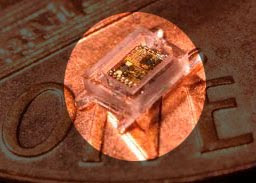 Customers lined up outside Apple stores in Australia and New Zealand last week for the international launch of the iPad 2, which has flown off the shelves in the United States leaving the company struggling to meet demand.
Customers lined up outside Apple stores in Australia and New Zealand last week for the international launch of the iPad 2, which has flown off the shelves in the United States leaving the company struggling to meet demand.Analysts forecast some 1 million devices may have been sold in the first weekend of the launch in the United States, but many warn that it’s not clear how supply constraints will affect availability following the Japan earthquake and tsunami.
Apple plans to roll out the new iPad on Friday to 25 markets including France, the United Kingdom, Canada, Denmark, Germany, Italy, Mexico, Netherlands, and Spain. The iPad 2, a thinner and faster version that features two cameras for video chat, was introduced in the United States on March 11.
But some would-be buyers have expressed frustration at how difficult it has been to secure one of the wildly popular tablet computers, sparking speculation Apple misjudged demand.
“If it wasn’t for the iPad, I wouldn’t be in Australia right now,” said Alex Lee, a backpacker from Canada, who was the first in the queue outside the glass-fronted Apple store in Sydney’s central business district.
He said he diverted his travels from Singapore to attend the launch. “It’s like a habit. I’ve also lined up on Regent Street in London for the iPhone”, added Lee, who had a folding chair and blanket and had spent two nights waiting.
 It is an issue that many law enforcement agencies and governments don't want to discuss, according to Professor Andrew Dempster, a specialist in satellite navigation signal processing and receiver design.
It is an issue that many law enforcement agencies and governments don't want to discuss, according to Professor Andrew Dempster, a specialist in satellite navigation signal processing and receiver design. Reliable sources said that over the past 24 hours, Web searches for "st. patrick" and "who was st. patrick" have both tripled. Add to that the related searches on "was st. patrick really irish" and "did st. patrick get rid of all the snakes in ireland."
Reliable sources said that over the past 24 hours, Web searches for "st. patrick" and "who was st. patrick" have both tripled. Add to that the related searches on "was st. patrick really irish" and "did st. patrick get rid of all the snakes in ireland."  Thousands of seabirds were killed when the tsunami generated by last week's massive earthquake off Japan flooded Midway, a remote atoll northwest of the main Hawaiian islands, a federal wildlife official said recently.
Thousands of seabirds were killed when the tsunami generated by last week's massive earthquake off Japan flooded Midway, a remote atoll northwest of the main Hawaiian islands, a federal wildlife official said recently. Last week's devastating earthquake and tsunami in Japan has actually moved the island closer to the United States and shifted the planet's axis.
Last week's devastating earthquake and tsunami in Japan has actually moved the island closer to the United States and shifted the planet's axis. A devastating tsunami triggered by the biggest earthquake on record in Japan looked set to kill at least 1,000 people along the northeastern coast on Friday after a wall of water swept away everything in its path.
A devastating tsunami triggered by the biggest earthquake on record in Japan looked set to kill at least 1,000 people along the northeastern coast on Friday after a wall of water swept away everything in its path. Top NASA scientists said there was no scientific evidence to support a colleague's claim that fossils of alien microbes born in outer space had been found in meteorites on Earth.
Top NASA scientists said there was no scientific evidence to support a colleague's claim that fossils of alien microbes born in outer space had been found in meteorites on Earth. Scientists have created the world's smallest computer system to help treat glaucoma patients. At just one square millimetre in size, the tiny device is a pressure monitor that is implanted in a person's eye.
Scientists have created the world's smallest computer system to help treat glaucoma patients. At just one square millimetre in size, the tiny device is a pressure monitor that is implanted in a person's eye.




